The Origins of Crop Plants
2.1 Domestication of Plants and Animals
Tremendous natural variations exist among the individuals of any plant species. The traits that define color, shape, flavor, height, yield, and resistance to pests, pathogens, and environmental stresses are not fixed within a species. Individual plants and animals from the same species can be easily distinguished based on these characteristics.
Since the beginning of agriculture, humans have unconsciously been selecting plants and animals with desirable traits, such as large-sized grains, pods, fruits, and vegetables; sweeter and less-seeded fruits; less bitter and nonprickly vegetables; cereals with large panicles and tough rachis; non-seed-shattering plants; and so on. As a consequence of such artificial selections over many generations, unprecedented changes occurred in cultivated plants that set them apart from their ancestors and wild relatives. For example, the relentless efforts of humans led to the development of various crops, such as corn from a wild-grass teosinte; long-spiked, six-row barley from short-spiked, two-row wild barley; large tomatoes from a small berry; and a variety of less-seeded fruits and palatable vegetables from their bitter wild ancestors (see figures 2.1 and 2.2). These plants—enriched in traits that favor higher yields, productive harvest, and increased palatability—would not have come into being without the persistence of humans since the dawn of agriculture.
Artificial selection by humans counteracts the process of natural selection. In nature, small fruits are packed with seeds, thistles, thorns, and prickly leaves; have a bitter taste; ripen asynchronously; and have seeds that spontaneously shatter—all traits that favor the survival of the plants. Thus artificially selected and propagated species of cultivated plants, lacking necessary traits for survival, become more vulnerable to diseases, predators, and environmental stresses. These crops cannot survive in nature for a long time without human help.
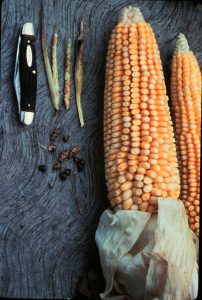
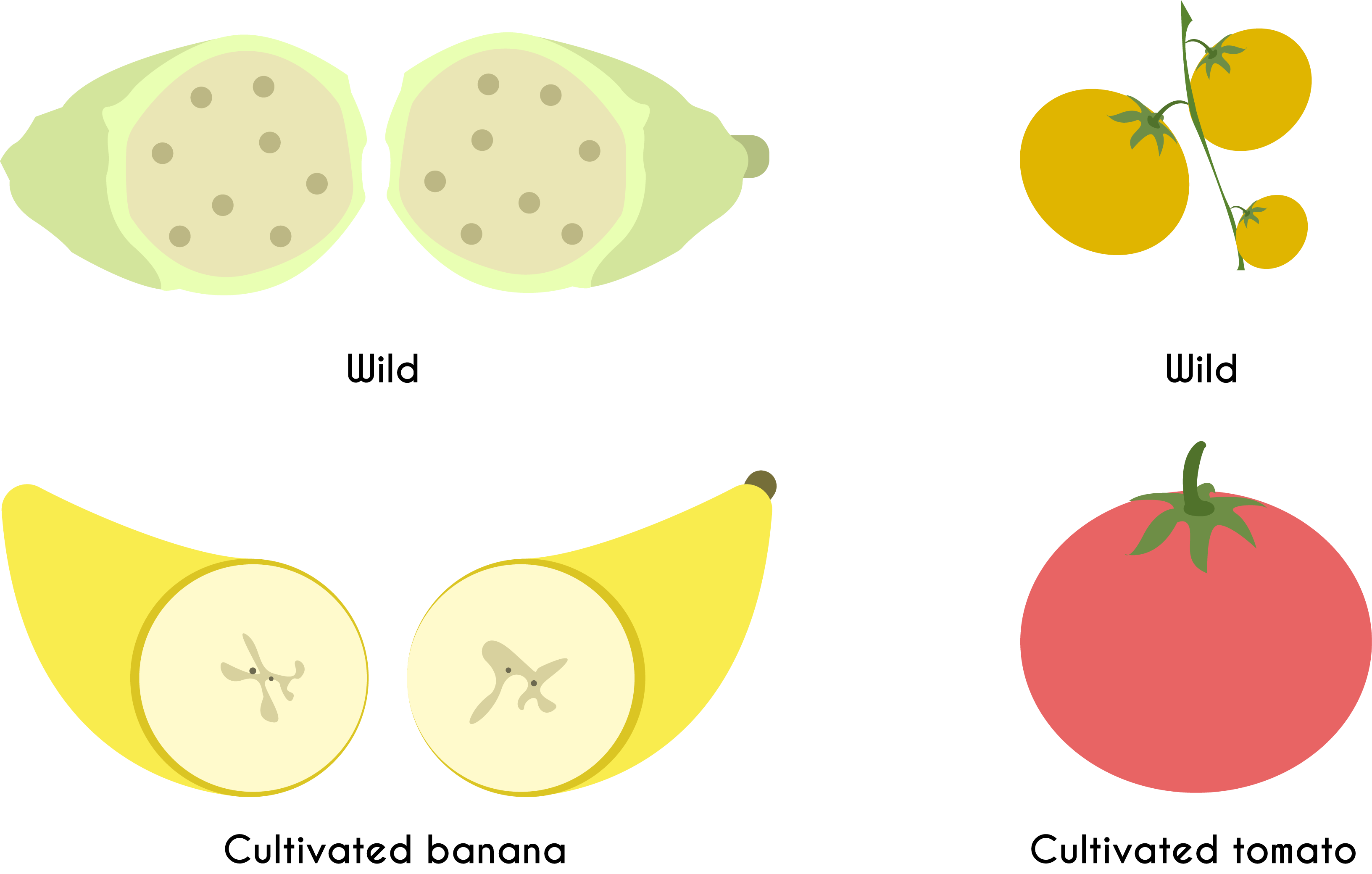
For several millennia, humans have put tremendous effort into providing protection and ensuring the continuous propagation of cultivated plants. We provide fertilizers, pesticides, and water and provide services such as weeding to promote the growth of crop plants. Thus domesticated plants need humans for their survival as much as human survival depends on them. These species cannot survive in nature for a long time by themselves, but with human help, they have spread globally. For some species, this dependency on humans has become total. For example, maize absolutely depends on humans for its survival. If you leave a mature cob in the field, some of its seeds may germinate on the cob, but they will soon die due to the lack of space for emerging seedlings to grow. Furthermore, maize seeds do not fall spontaneously and need human help to be detached from the cob and planted in the soil.
This mutual interdependence between crop plants and humans (and, similarly, between humans and artificially selected and bred animals) was achieved over several millennia, and this is the historical process we call “domestication.” Thus to a great extent, all crop plants and domesticated animals are man-made.
2.2 Landraces of Crop Plants
n addition to artificial selection, cultivated plants were continuously subjected to the natural selection imposed by their immediate environment, geographical locality, and agricultural practices. Thus domesticated plants are products of artificial selection operating within environmentally enforced natural selection and the agricultural practices prevalent in a given region. The early domesticated plants flourished in their native environment, but when shifted to new locations, they performed poorly. Over time, the few offspring of the introduced plants acquired characteristics (i.e., via spontaneous mutations or hybridization with related species present in the new locality) that helped them stabilize in their new surroundings. This process has produced diversified varieties of crops known as landraces, each adapted to a specific geography, climate, or environment (seasonal variations in day length, temperature, water availability, soil quality, salinity, etc.) and its associated pests and pathogens.
The landraces differ from one another in taste, fragrance, flavor, nutrient composition, and tolerance to pathogens and environmental stresses. Before the industrialization of agriculture, traditional farmers had very small holdings but grew many varieties of the same crops for multiple uses. Typically, in a small village, one could find several cultivars of fruits and vegetables as well as many varieties of grains. Farmers have local names for each of these different varieties based on their special traits or origins. For example, more than 3,000 varieties of rice have been developed around the globe and grow in a range of climatic conditions and geographical locations, from temperate hillsides, to tropical planes, to flooded marshes in coastal regions. Each variety of rice has a name and specific usage in culinary dishes (e.g., sushi, pudding, pilaf, steamed rice, crackers, and baby food).
Similarly, more than fifty races of maize are found in Mexico—thirty races in the Oaxaca province alone. Each race includes hundreds to thousands of varieties adapted to the immediate environment and climatic conditions and each has a special use (see figure 2.3). For instance, the popcorn variety’s seeds possess a hard outer cover capable of holding steam for a sufficient amount of time when heated, allowing for the full transformation of starch required for making popcorn. Conversely, the seeds from other corn varieties containing a thin seed cover do not produce good popcorn because, upon heating, they break easily, causing steam leakage. Another example is the sweet corn variety, consumed primarily after boiling or roasting, which lacks an enzyme that efficiently converts sugar to starch and thus has higher sugar content. Dent corn, the most popular corn variety grown today, has soft starch and is lightly sweeter; thus it is used for making chips and tortillas. Before 1920, flint corn was the most widespread variety because it is naturally resistant to many pests and pathogens prevalent in the tropics and is highly productive.
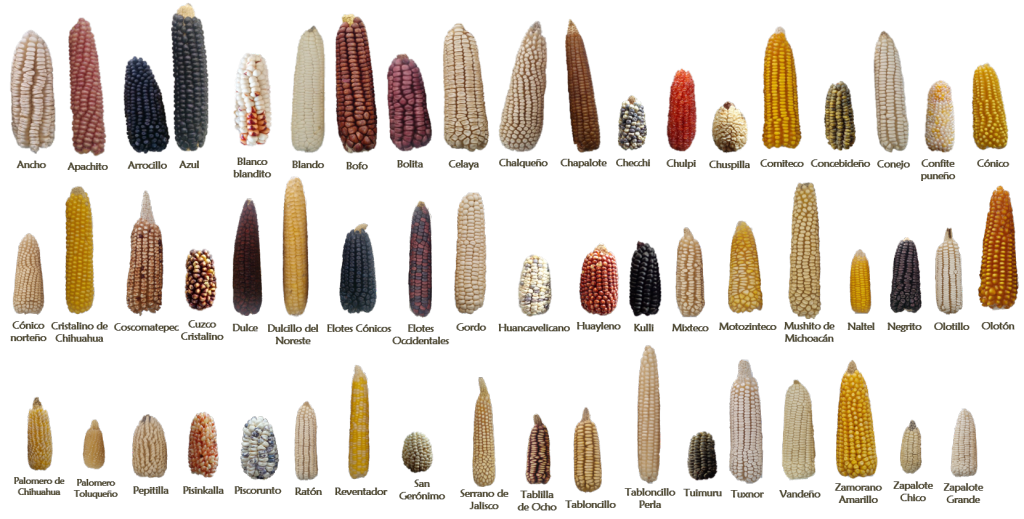
For centuries, farmers have been stocking seeds of different varieties separately to ensure their purity and have been careful about not mixing the seeds from multiple varieties. To avoid cross-contamination, farmers usually save seeds for the next year’s sowing from the plants growing in the middle of their fields. This way, the individual varieties are maintained, but their independent evolution and development are also continued. The landraces of the various crops that have survived today are not 100 percent identical to their ancestors that existed 200 or 1,000 years ago. They are constantly changing, keeping in tune with their growing environment and adapting to the changes in it.
2.3 Centers of Crop Domestication
Nikolai Vavilov, a Russian agricultural scientist, was one of the first scientists in the world to infer that the process of domestication—the enrichment of desirable traits by human/artificial selection—also led to the loss of many useful traits (see figure 2.4). He noted that in comparison to their wild relatives, most crops easily succumb to parasites, pests, and pathogens and are less resilient under unfavorable environmental conditions. Vavilov proposed that these lost traits can be traced back to the wild progenitors and related species of crop plants, which are likely to still be present in the regions where crops were first domesticated. He further proposed that useful traits can be reintroduced in crops by employing the kind of systematic plant breeding rooted in the principles of Mendelian genetics (we describe the work of Mendel and the basic principle of genetics in chapter 5).
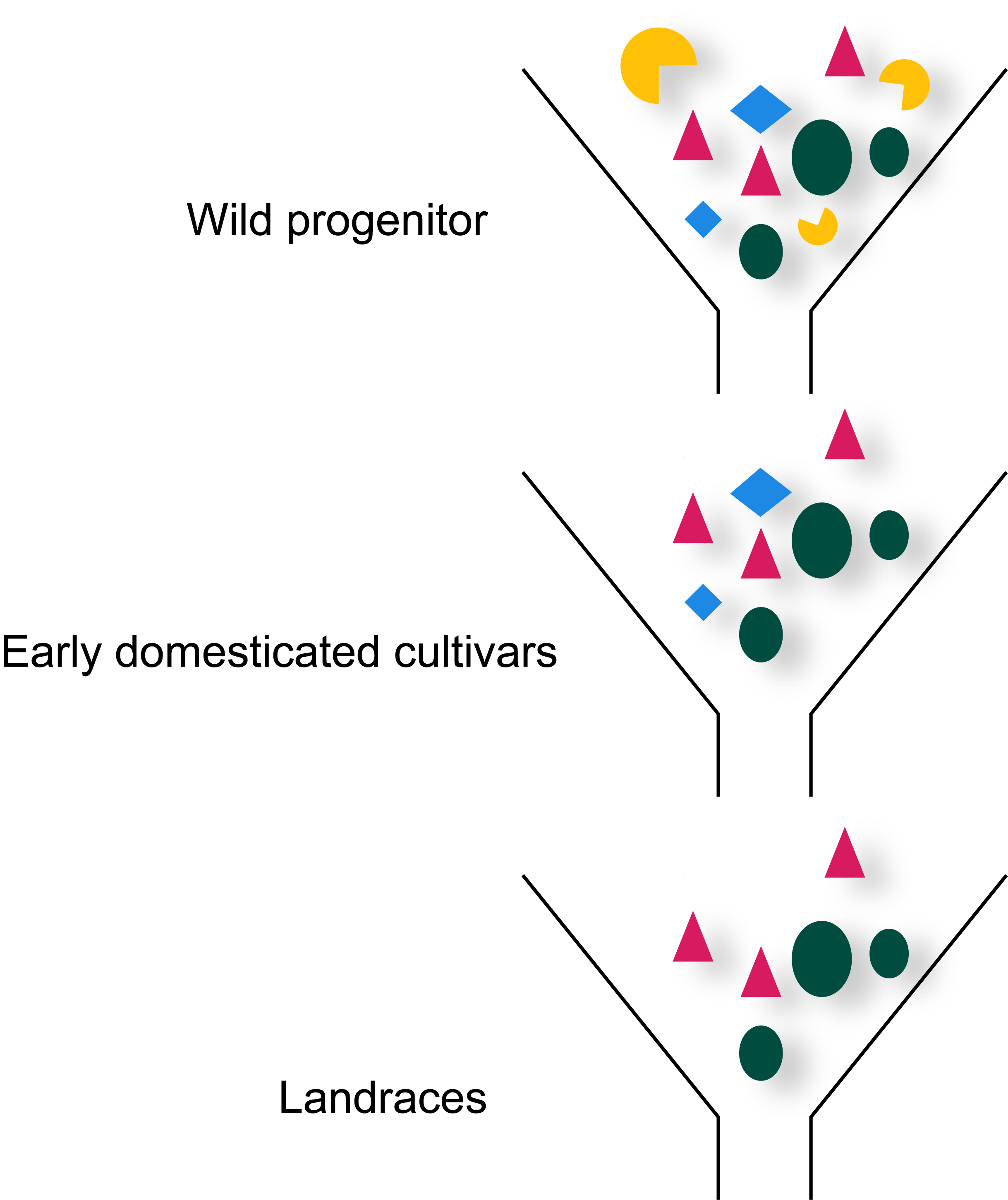
In the 1920s, knowledge about the domestication centers of crop plants was lacking. So Vavilov took this herculean task upon himself and set forth on a mission to collect the germplasm (seeds, tubers, roots) of all domesticated crops and their wild relatives. He led nearly a hundred expeditions to sixty-four countries on five continents over the course of twenty years and built the world’s biggest plant germplasm collection, which included 350,000 accessions of seeds, roots, and tubers representing about 2,500 plants. Based on the study of this comprehensive collection and observations about human cultures and linguistics, Vavilov proposed eight geographic centers as the birthplaces or “centers of origin” of crops—the places where the ancestors, wild relatives, and other related species of crops still live and where mankind first began their cultivation. These eight centers include China, India and the Indo-Malayan region, Central Asia (including Pakistan, Afghanistan, Turkestan, and the northwest Indian provinces of Punjab and Kashmir), the Near East, the Mediterranean, Ethiopia, southern Mexico and Central America, and South America (Ecuador, Peru, Bolivia, Chile, and Brazil-Paraguay; see figure 2.5). Overall, Vavilov associated about 640 crops with their biodiversity centers. Five-sixths of these came from the Old World (Asia, Africa, Europe) and one-sixth from the New World (Australia, North and South America).
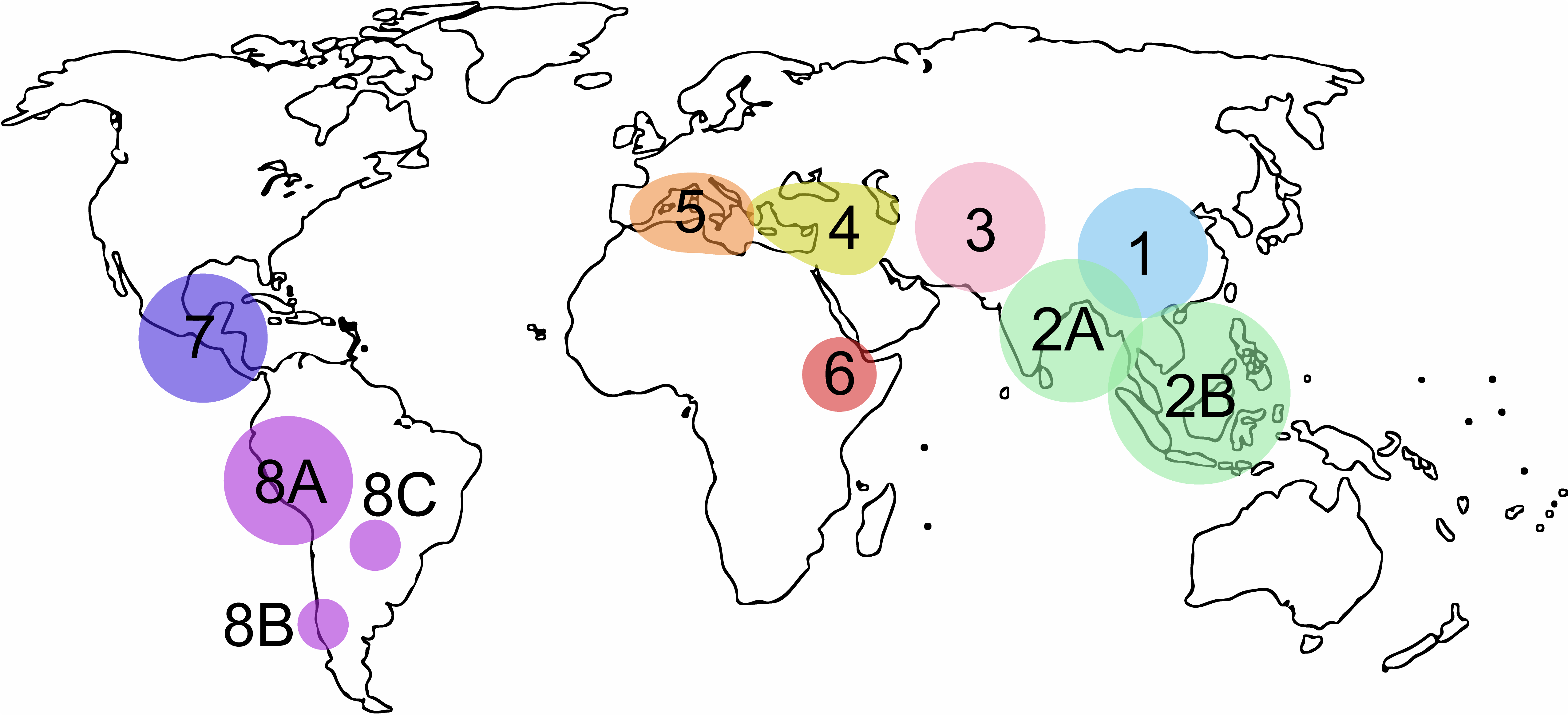
Contrary to popular belief, Vavilov’s research revealed that crops did not originate in the large river valleys associated with the rise of human civilization. Rather, most crops were born in the kinds of geographically isolated regions (hills, desert-ridden areas, or cold or extremely hot regions) that comprise only 2–3 percent of the world’s area. In these challenging localities, the pressure of natural selection on vegetation is robust and variable compared to other areas, and so we find high biodiversity in these areas. The list below identifies the eight centers of origin of crops and associated plant species that Vavilov identified (along with a ninth, discovered after his death).[1]
It is eye-opening to see how the various kinds of produce, grains, fruits, vegetables, and spices available in supermarkets today have originated in such distant places. Since human societies have been continuously in motion, crops have moved with them, away from their centers of origin, and have been subjected to additional artificial and natural selection in their new environments. They continued to evolve and diversify as a result of spontaneous mutations, hybridization, and agricultural practices. Thus most crops also acquired genotypic and phenotypic diversity postdomestication. As a result, for many crops, their primary center of origin and the center of diversification (where many varieties of crops evolved) differ.[2] For example, the center of origin and center of diversification of maize differ significantly. However, compared to the primary centers of origin, the secondary centers occupy a large area and possess less biodiversity of plant species. The secondary centers are relatively rich in domesticated crop varieties (landraces) but lack the immediate wild progenitor and other related wild species.
After Vavilov, many archeological digs ascertained the centers of origin of additional crop species, and a new center of crop origin was identified as well (New Guinea). The fundamental research work conducted by Vavilov and his colleagues still stands; however, now scientists recommend the use of center of diversity instead of center of origin because only a crop’s center of biodiversity can be identified based on data—at best, we can only guess at the center of origin. Currently, those identified by Vavilov are known as “Vavilov’s Centers of Biodiversity.”
Since, typically, the “centers of origin” of crops are rich in their biodiversity,[3] their exploration helps scientists comprehend the full spectrum of the gene pool available for a given crop, which can then be utilized for breeding experiments. It is important to note that the plant breeders only transfer useful traits from one variety to another by crossing and then selecting the progeny that have desirable combinations of traits. The breeders do not create traits. If a trait is absent in cultivated varieties of a crop species and its ancestors, progenitors, and related species, it cannot be introduced by classical breeding. Biodiversity serves as the resource bank from which scientists can borrow useful traits. It also defines the limits of classical breeding. Therefore, biodiversity centers are the insurance policies for the continuation of today’s crops. Scattered across these centers are the genes/traits that provide resistance to pests and pathogens or the ability to tolerate environmental stresses—the raw materials for breeding advanced varieties of crops.
Table 2.1: Centers of origins (biodiversity) of crops
| Center | Remarks |
|---|---|
| 1. China | 136 crops were domesticated in this region including rice, sorghum, soybeans, barley, radish, cabbage, mustard, onion, cucumber, pear, apple, apricot, peach, cherry, walnut, litchi, sugarcane, and poppy. Rice was one of the first crop (~ 8,000 years ago) cultivated in the Yangtze River Valley. Pigs, roosters, and dogs were also domesticated here. |
| 2a. Indo-Malay | This region includes parts of India, parts of China and the Malay Archipelago. Here, clove, nutmeg, black pepper, coconut, hemp, banana, grapefruit, reed and velvet beans were domesticated. |
| 2b. Indo Burma | This center includes North-East region of India and present day Myanmar (Burma). Here, ~117 crops including jute, sandalwood, indigo, bamboo, neem, rice, gram, pigeon pea, mung, cowpea, eggplant, cucumber, radish, carrot, mango, orange, lemon, tamarind, coconut, banana, hemp, pepper, cloves, nutmeg, reed, sesame, and cotton were domesticated. |
| 3. Central Asia | This center includes North-Western India (Punjab, Haryana, and Kashmir provinces), Pakistan, Afghanistan, Tajikistan, and Uzbekistan. ~ 43 crops developed in this area, including three varieties of wheat, peas, lentils, horse lentil, gram, mung bean, mustard, linseed, sesame, cotton, hemp, onions, garlic, spinach, carrots, pistachio, almond grapes, pears and apples. |
| 4. Near East (Fertile Crescent) |
This center includes present day Turkey, Israel, Syria, Jordan, Lebanon, Iran, Iraq, Turkmenistan and the interiors of Asia Minor. ~ 150 crops including rye, barley, oats, Einkorn wheat, Durum wheat, Persian wheat, Pollard wheat, common Bread Wheat, Oriental wheat, lentils, lupine, peas, gram, pomegranate, mulberry, apple, grapes, pears, cherries, walnut, almonds, pistachios, dates, fennel, cumin, carrots, onions, and garlic were domesticated in this region. ~ 10,000 year old fossils of rye have been found at many archeological sites in this area. Evidence of earliest rye cultivation ~13,000 years ago has been found in Syria and the remains of ~ 9000 year old domesticated sheep, goats and pigs have been found in Turkey. |
| 5. Mediterranean | This center includes regions around the Mediterranean Sea. Here, 84 crops including durum wheat, Emmer wheat, Polish wheat, oats, peas, lupine, clover, black mustard, olives, beets, cabbage, turnip, lettuce, asparagus, rhubarb, mint, hop, sage, celery, etc. were domesticated. |
| 6. Ethiopian Center | This center includes Abyssinia, Eretria, Somaliland, and Ethiopia. 38 important crop plants including Abyssinian and emmer varieties of wheat, millet, sorghum, cowpea, flaxseed, tef, sesame, coffee, okra, indigo, castor, and gum Arabica were domesticated in this region. |
| 7. Southern Mexico and Central America | This center includes Southern Mexico, Guatemala, Honduras and Costa Rica. Here, maize, potato, tomato, pumpkin, capsicum, chili, papaya, guava, cashew, chocolate, cotton, passion flower, tobacco, various beans, sisal, sweet potato, arrowroot etc. were domesticated. in this region, ~7000-year-old remains of maize and 10,000-8,000 years old seeds of squash have been found in the archaeological excavation. |
| 8a. Peru, Ecuador, Bolivia Sub center (South America) | In this region, 62 species of crop plants including potatoes, maize, lima beans, tomatoes, pumpkin, capsicum, cotton, guava, passion flower, tobacco etc. were domesticated. |
| 8b. Chile (South America) | Several varieties of potato and strawberry were domesticated in this center. |
| 8c. Brazilian-Paraguay (South America) | Peanuts, pineapples, cashew nuts, Brazil nuts, rubber, etc. developed here. |
| 9. New guinea* (Far East) |
Recent research proves that ~ 7000 years ago, agriculture started independently in the mountainous region of New Guinea. In this area, bananas, knives, reeds etc. developed. *This center was identified after Vavilov death. |
2.4 The Life and Work of Nikolai Vavilov
Nikolai Vavilov (1887–1943), a Russian scientist of the early twentieth century, was a pioneer in the field of plant biogeography and germplasm conservation. He was among the first few scientists of the early twentieth century who championed Mendelian genetics for crop improvement.
Nikolai Vavilov (see Figure 2.6) was born on November 25, 1887, in Moscow, before the Russian Revolution. He studied agriculture, and after graduating in 1911, he worked with Dmitry Pryanishnikov, a world-renowned soil scientist, for a year while also teaching at Petrovskaya Agricultural Academy. Soon, Vavilov joined a PhD program under the supervision of the Russian professor Robert Eduardovich Regel (of the Bureau of Applied Botany in Leningrad) and famous English biologist William Bateson (the director of the John Innes Horticultural Institution in Norwich, England). In the early years of the twentieth century, Bateson was the champion of Mendelian genetics; he in fact coined the term genetics to describe the study of Mendelian inheritance and the science of variation. Vavilov spent two years in Bateson’s laboratory at John Innes, where he acquired necessary knowledge about Mendelian genetics.
In 1914, Vavilov returned to Russia and was appointed as a professor at Moscow University. In 1917, he became the director of the Lenin Academy of Agricultural Sciences in Saratov. He was the first scientist to start work on genetics in the Soviet Union. In this position, he set the primary agenda of the institute: to collect germplasm from all over the world in order to develop advanced crop varieties by employing the principles of Mendelian genetics. For the first decade, the newly formed Soviet government provided Vavilov with plenty of resources and grants for several germplasm collection expeditions.
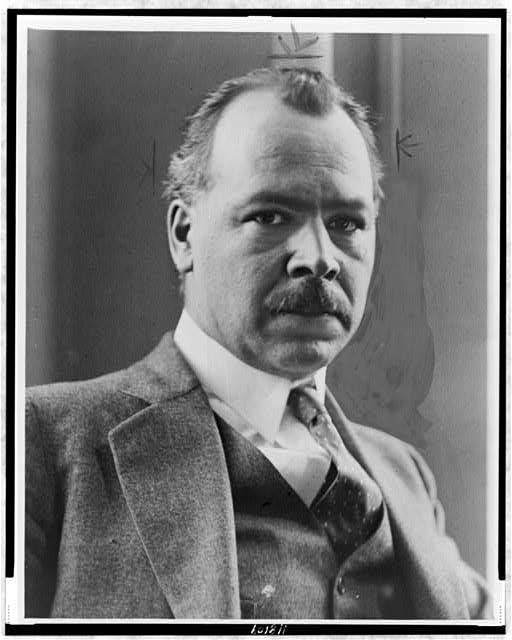
Vavilov, along with his team, traveled to sixty-four countries on five continents to collect seeds, tubers, and germplasm. In Kazakhstan, they found wild apples, and thus the world came to know the birthplace of this fruit. In Peru, they found countless varieties of potatoes, and in Iran, Syria, and Afghanistan, they found relatively quick-ripening varieties of wheat that possessed natural resistance to pests and parasites. Overall, Vavilov led a hundred explorations, which resulted in the collection of over 300,000 samples, accompanied by detailed descriptions. He had remarkable success in managing his extensive field trips in such diverse nations as Ethiopia, Italy, Kazakhstan, Mexico, Brazil, and the United States. In the early 1900s, traveling was rather difficult and required hopping between various modes of transportation, including extensive journeys on foot and horseback. An equally daunting task was the recruitment of local crews of porters, guides, and collaborators. However, many of Vavilov’s personal qualities and his demeanor helped make these missions successful. He was physically fit, mentally sharp, and a polyglot who could converse in eight languages. He was capable of quickly developing friendships and collaborations with strangers, common folk and international scientists alike. On a personal level, Vavilov took care of everyone on his team and the people he interacted with around the world. Among his various field trips, the most historic missions included three visits to North America, Mexico, and South America in 1921, 1930, and 1932; the Mediterranean Sea and Ethiopia expedition in 1926–27; and the trip to Afghanistan in 1924, for which he received a gold medal from the Russian Geographic Society. Later, he also served as the president of that society, from 1931 to 1940. In the first decade of his career, he became the leader of Soviet agricultural policies and headed 111 institutions.
In addition to germplasm collection, Vavilov directed projects at Saratov and other research centers aimed at breeding crop varieties that could tolerate the extremely cold climate of the Soviet Union. These projects were deemed of national importance because a large area of the country suffered agricultural losses due to frost, and the damages to the wheat crop were especially devastating. However, the success of these projects required sustained work on classical breeding and the evaluation of the crossings.
Unfortunately, year after year, in the Soviet Union, grain remained in short supply and hunger was prevalent. To improve agriculture, in 1929, Stalin announced his Great Break from the Past policy, which led to the establishment of collective farms through the merging of individual family farms. The big government-run farms employed monocropping, which led to more loss of harvest. Before government-run collective farming, individual farmers sowed many varieties of seeds. If the crop was ruined in some areas due to the weather, then it would have been saved in other places, and so a good yield could be obtained elsewhere. With monocropping, the impacts of disease and frost were instead widespread. The failure of collective farms, along with rapid industrialization, caused famine. Millions of people died of hunger in the Soviet Union.
Stalin wanted to make the Soviet Union self-sufficient in terms of food production, and the responsibility for improving agricultural yields rested on Vavilov’s team. Stalin gave Vavilov three years to develop advanced varieties of grains that could perform in the extremely cold and unpredictable climate of the USSR. At that time, even the best breeder could succeed only after ten to twelve years. Nikolai Vavilov knew that advanced crops could be developed by following the principles of genetics in a very methodical and systematic manner for a decade, but not in a shorter time frame. Thus he could not promise a miracle to Stalin. But he kept working hard and kept up the morale of his colleagues.
Meanwhile, scientist Trofim Lysenko claimed that soaking seeds in cold water for a day or two prior to sowing would result in higher germination rates and could possibly enhance the resilience of a crop in colder climates. Unlike Vavilov, Lysenko was from a poor proletariat background and thus more trustworthy to Soviet policy makers and Stalin, who actively sought to replace bourgeois scientists with party cadres hailing from impoverished families. They deemed Trofim Lysenko a proletarian genius who could provide an alternative to bourgeois science and thought Lysenko’s experiments to be consistent with Darwin’s theory of evolution.
In his desperation to bring revolutionary changes to agriculture, in 1938, Stalin appointed Lysenko as the president of Lenin Academy, the highest post for an agricultural scientist in the Soviet Union. Vavilov, as an expert geneticist, knew that Lysenko’s methods would not work. He firmly opposed Lysenko’s claims and, to the best of his ability, provided scientific explanations to Stalin and his cabinet, but they did not trust Vavilov. Vavilov challenged Lysenko to a scientific debate on the merit of his claims, but Lysenko campaigned against Vavilov and the science of genetics with the help of the Communist Party cadres.
Stalin and his cabinet took a highly negative stand toward genetics based on their political ideology in response to the inhumane experiments of eugenics in Germany and the US at the time. Since Vavilov was a world-renowned scientist in genetics, he was declared the leader of this unacceptable science. Thus the end of genetics in the Soviet Union meant the end of Vavilov and his colleagues. His funding was ceased, and in 1937, Vavilov’s foreign travels were banned forever. More than a hundred of Vavilov’s fellow scientists were sentenced to death on charges of treason. Stalin also ordered the execution of two of his (Stalin’s) closest associates, Nikolai Bukharin and Nikolai Gorbunov, for supporting the science of genetics. Vavilov’s position was downgraded to the head of the Institute of Applied Botany and New Crops in Leningrad, where he was to work under Lysenko. Even while working in difficult circumstances and without resources, Vavilov stood firmly by his principles. He continued to write letters to the government for the release of his associates, though his correspondence with foreign scientists was blocked. He wrote his last letter to Professor Harry Harlan in 1937. Harry’s son Jack Harlan was interested in doing his PhD under Vavilov’s supervision, and he had sent his application to Vavilov. In reply, Vavilov addressed Harry Harlan (not Jack) and described a variety of wheat found in China. Vavilov normally addressed Harry Harlan as “Dear Doctor Harlan.” This was the first letter in which Vavilov addressed him as “My Dear Doctor Harlan” and derailed from addressing a question. The senior Harlan asked his son to abandon the idea of research with Vavilov.
On August 6, 1940, Nikolai Vavilov was arrested while on a field trip in Ukraine, though the information of his arrest was not made public for three years. However, since Vavilov was a scientist of international repute and used to correspond with scientists from all over the world, the scientific fraternity became concerned about Vavilov’s well-being after his correspondence ceased. So in 1942, the Royal Society of London elected him as a member, sending a letter along with the associated certificates to Vladimir Komarov, president of the Soviet Academy. In order to accept this honor, a signature from Nikolai Vavilov was required (which would have confirmed him being alive). In reply, Komarov had the certificate signed merely “Vavilov”—by Sergei Vavilov, the younger brother of Nikolai and the physicist who headed the Soviet nuclear program. The British embassy wrote back to Komarov stating that the signature of Nikolai Vavilov was expected, not that of his brother. However, the Soviet government went silent, and so after this, a rumor was spread in the scientific community that Nikolai Vavilov had been murdered by Stalin.
Actually, Nikolai had been accused of misuse of government grants and treason and was sentenced to death in 1942. But from prison, Vavilov appealed to Marshal Leverentia Beria to reconsider his sentence. Beria was one of Stalin’s trusted allies and the head of the Supreme Department of Legal Affairs (NKVD). In addition, Vavilov’s old professor Dmitry Pryanishnikov tried his best to reduce Nikolai’s punishment. He too had friendly relations with the Beria family: Beria’s wife was also a student of Pryanishnikov. Despite the hopelessness, the British Royal Society also continued to press for Vavilov’s safety. Whatever the reason, Beria converted Vavilov’s death sentence to twenty years of rigorous imprisonment. But on January 26, 1943, Vavilov died of starvation in Saratov prison.
After Stalin’s death in 1953, Russian scientists pressured Nikita Khrushchev to reinvestigate Vavilov’s case. This time, all the charges against Vavilov were dismissed, and he was awarded a place in the history of the Soviet Union with posthumous honors.
Although many of Vavilov’s unpublished research papers and research data were destroyed between 1940 and 1953, some material was saved by his wife, Yelena Berulina. Fatikh Bakhtev, a close associate of Vavilov who was involved in many of his field trips collecting germplasm, also survived the Stalin era. In 1957, Yelena Berulina and Fatikh Bakhtev published Vavilov’s remaining material and data. This fundamental research work conducted by Vavilov’s team of scientists provided insight and the direction to future research on crop domestication.
The building of the Bureau of Applied Botany is now known as the Nikolai Vavilov Institute of Plant Genetic Resources, and Vavilov is counted among the greatest scientists of the twentieth century. Vavilov’s collection, his research papers, and information about his life are available on the Nikolai Vavilov Research Institute website (http://www.vir.nw.ru).
2.5 The World’s First Seed Bank
In the 1920s, Nikolai Vavilov established the world’s first seed bank in the building of the Bureau of Applied Botany in Leningrad, housing major collections of seeds and germplasm there that included 300,000 varieties of seeds and germplasm of 2,500 plant species. His team of scientists was also involved in conducting the detailed characterization of major crop varieties and systematic crossing experiments in experimental centers across the Soviet Union.
Hitler had a keen interest in genetics. During World War II, Germany formed a special commando squad to capture Vavilov’s seed bank. On June 22, 1941, Germany invaded the Soviet Union. As the Germans advanced, they captured small seed banks in the western region, but the main seed bank in Leningrad was still out of their reach.
After the incarceration of Vavilov and many of his senior colleagues in 1942, the remaining scientists of the institute voluntarily shared the responsibility of protecting the germplasm collection during World War II. Apart from Hitler, this seed bank was also threatened by the starving people of Leningrad. In those years of war, 700,000 people died of hunger in Leningrad—including many of Vavilov’s colleagues who stood protecting the seed bank. One by one, they starved to death while safeguarding the vast storehouse of seeds and tubers. Stalin was not interested in saving the seed bank, and thus the government did not provide any support. As Vavilov wasted away in prison, his associates successfully protected the germplasm collection for 900 days during the siege of Leningrad. This is a unique story of the sacrifice made by scientists to protect a seed collection for future generations.
The Leningrad seed bank also survived by pure chance. Hitler had planned to host a celebration of his victory at the Astoria Hotel on St. Isaac’s Square; thus Germans did not bomb that area. The seed bank was right in front of the hotel. Similarly, when the war ended in 1944, the Germans were defeated before reaching Leningrad.
In the years since World War II, more seed banks have been established around the world, many of which also contain large amounts of seeds from Vavilov’s collection. Today, this seed bank exists as part of the N. I. Vavilov Scientific Research Institute of Plant Industry in St. Petersburg (see figure 2.7). For the past century—and still today—the seeds and germplasm of various crops from this collection have been used by plant breeders worldwide to produce improved varieties of cereals, vegetables, and fruits. Much of the raw material for making advanced varieties of various crops, fruits, vegetables, and so on remains in Vavilov’s seed collection for free.

Even though the world population has increased more than three times over the last century, the world is now producing more food than people need. Vavilov and his fellows—many of whom themselves died of hunger—made tremendous contributions toward achieving global food security by creating a tremendous genetic resource for future crop improvement. Now that many species of plants are extinct in their centers of origin, Vavilov’s seed and germplasm collection has become invaluable.
The work of Vavilov and his colleagues helped further our understanding of the importance of biodiversity and the conservation of germplasm in ensuring food security for mankind. Thanks to them, today, there are more than a hundred large and many thousands of small seed and germplasm banks in the world.
Further Readings
Darwin, C. (1859). On the origin of species by means of natural selection, or the preservation of favored races in the struggle for life. John Murray, London.
Harlan, J. R. (1973). On the quality of evidence for origin and dispersal of cultivated plants. Current Anthropology, 14(1–2), 51–62.
Harlan, J. R. (1975). Agriculture origins: Centers and noncenters. Science, 174, 465–74.
Nabhan, G. P. (2009). Where our food comes from: Retracing Nickolay Vavilov’s quest to end famine. Island Press.
Pringle, P. (2009). The murder of Nikolai Vavilov: The story of Stalin’s persecution of one of the great scientists of the twentieth century. JR Books.
Vavilov, N. I. (1931). The problem of the origin of the world’s agriculture in the light of the latest investigation. https://www.marxists.org/subject/science/essays/vavilov.htm.
Vavilov, N. I. (1987). Proiskhozhdenie i geografi i a kul’turnykh rastenii [The origin and geography of cultivated plants]. Nauka.
- A clickable world map showing the center of origin of various crops is available at https://www.biodiversidad.gob.mx/v_ingles/genes/centers_origin/centers_plants1.html ↵
- This is also sometimes due to reasons other than human migration. One classical example is pine, which has its center of origin in northwestern China but its center of diversification in Central America (Mexico, Guatemala, and Honduras). At present, 49 out of a total of 111 species of pine are found in Mexico. The difference in the center of origin and center of diversification of pine resulted from a geological event (continental drift) long before the beginning of agriculture, which led to the isolation of various flora and fauna and thus their diversification in a new environment. ↵
- In simple terms, biodiversity refers to all cultivated varieties of crops along with their wild progenitor(s) and evolutionarily related species. ↵

